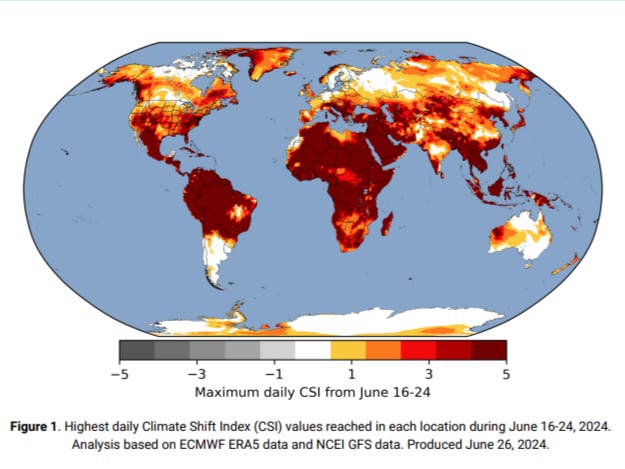More than 60 per cent of the world’s population endured extreme heat driven by the climate crisis over nine days in mid-June, according to a new study.
Approximately 5 billion people lived in extreme temperatures that were made at least three times more likely due to the climate crisis.
The study, published by Climate Central, covered the period from 16 to 24 June.
In India, which recorded its longest-ever heatwave this summer, at least 619 million people, over half of the population, experienced severe heat, with maximum temperatures approaching 50C and night-time lows of 37C.
The intense heatwave led to over 40,000 cases of heatstroke and over 100 deaths, according to official figures which are likely an undercount.
China too saw temperatures hitting 50C, the highest-ever recorded in June. Wuhan warned of potential electricity rationing due to increased demand for air conditioning.
In Saudi Arabia, at least 1,300 people died from heat-related illnesses during the Hajj pilgrimage, with temperatures in some cities surpassing 50C.
The US faced back-to-back heatwaves with southern states experiencing temperatures of 52C.
New York saw a 500-600 per cent increase in heat-related emergency visits, with temperatures made up to 2C hotter due to the climate crisis.
The Mediterranean also suffered, with Greece’s Acropolis shutting down after temperatures rose above 43C. Six tourists, including British Tv doctor Michael Mosley, died.
In Egypt, nearly 50C temperatures led to daily power cuts to manage the surge in energy consumption.
The extreme heat extended to the Southern Hemisphere, breaking records in Paraguay and Peru.
Extreme heatwaves that occurred once every 50 years now arrive nearly five times more often and are 1.5C warmer, according to the IPCC, the UN’s panel of top climate scientists.
Apparently heat stops at the Texas borders.
living in a literal “this is fine” meme
Brazil in Winter: your summer is so cute. You’re a snow flake. Hold my beer.




